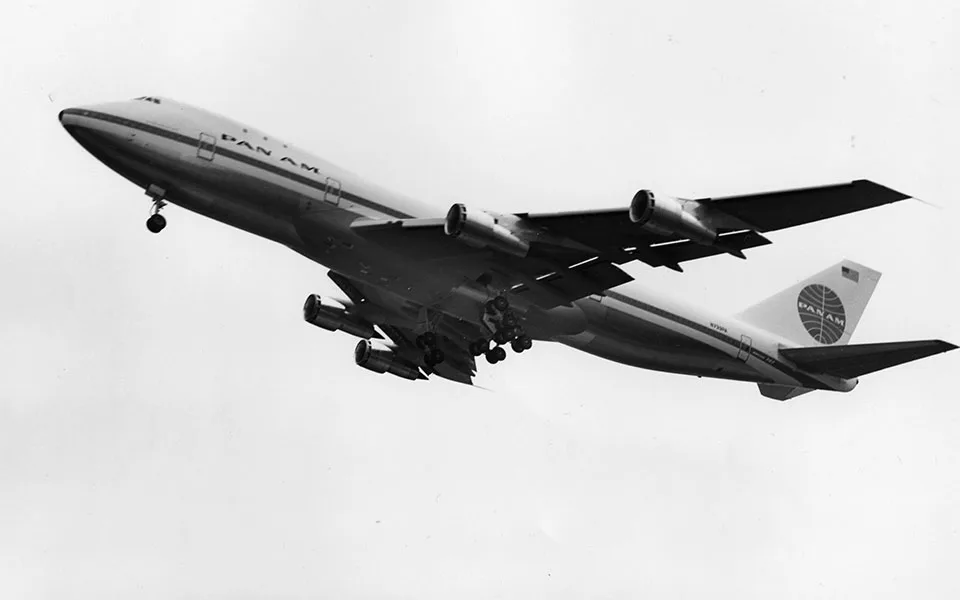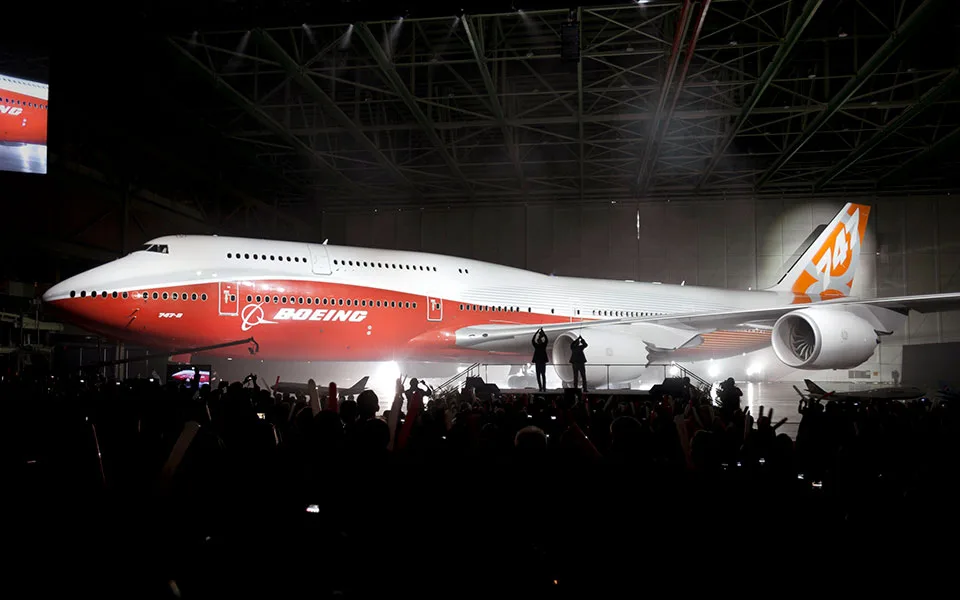Few aircraft are as instantly recognizable as the Boeing 747. Widely known as the “Queen of the Skies,” the jumbo jet changed the face of air travel when it started operating in 1970. But aside from its size, one feature made it recognizable, which is the Boeing 747 hump.
The raised upper deck gave the aircraft a distinctive shape, and it became an icon of global aviation. But the hump was not created to please the eye, it was the result of pragmatic business and engineering priorities. From Pan Am’s needs for cargo versatility to Boeing’s vision of a supersonic future, the hump tells the untold story of how design compromises shaped aviation history.

How the Boeing 747 Hump Was Born?
The origins of the Boeing 747 hump date back to the mid-1960s. At that time, Boeing was already anticipating supersonic transport. Subsonic widebodies like the 747 were considered as the interim jets until faster airplanes were produced, the engineers believed. This influenced their design choices.
Pan Am World Airways, under its bold founder Juan Trippe, was the launch customer for the 747. Trippe ordered 25 Boeing 747s in 1966, an enormous gamble at the time. But he wasn’t convinced that the 747 would succeed as a pure passenger plane. To hedge his bets, he demanded that the aircraft be convertible into a freighter with ease.
For this to happen, the nose needed to swing open, allowing the jet to transport oversized payloads. The problem? If the cockpit were placed in the nose, every time the front opened, avionics and wiring would have to be removed and reinstalled. It was impractical, unsafe, and expensive.
Eventually, the answer came from Boeing engineers: move the cockpit over the nose. That decision gave birth to the Iconic Boeing 747 Hump.

Pan Am and the 747: A Risk That Paid Off
The Boeing 747 hump would never have existed without Pan Am’s influence. Juan Trippe wanted future-proofing, and Boeing delivered it by raising the cockpit. This not only allowed cargo to be loaded on, but it also made room above the main deck.
At first, the hump was comparatively small, capable only of housing the flight deck and a lounge for first-class clients. Pan Am used this upper-deck lounge as a luxury salon to attract first-class customers. The rest, as they say, is history.
Trippe’s initial reluctance was unfounded. The 747 was an instant favorite among flyers, cutting per-seat costs and making intercontinental travel accessible to the masses. More than 1,500 aircraft had been built as of the end of production in 2023. The hump, a result of conservativism, was the plane’s most charming aspect.

From Lounge to Luxury: The Evolution of the Hump
The 747 hump did not stay constant, it evolved with each generation of the jumbo jet.
- 747-100 (1970): The first Boeing 747 had a short upper deck with just three windows. The airlines used it as a lounge, i.e., Qantas utilized it as its famous “Captain Cook Lounge.”
- 747-200 (1971): The aviation business realized space could be more lucrative as seats instead of a lounge. Boeing stretched the hump a bit and widened windows from three to ten, allowing up to 16 upstairs premium passengers.
- 747-300 (1980): Included Stretched Upper Deck (SUD), 23 feet (7 meters) extension of the hump and new exit doors. This was the first major visual change.
- 747-400 (1989): Retained stretched hump for passengers, but cargo models reverted back to shorter version. Retired 747-400s that were subsequently converted into freighter produced the “long-hump” cargo versions.
- 747-8 (2012): The final passenger model, the 747-8 Intercontinental, featured the longest hump to date with a redesigned staircase and extra seating upstairs.
From a cockpit home to an upper deck luxury, the hump became the epitome of exclusivity. Airlines marketed the upper deck for decades as the most desired seat on a long-distance flight.

Military Influence: Lessons From a Lost Contract
Interestingly, the Boeing 747 hump design was not entirely new. Boeing had attempted an analogous swing-nose, elevated-cockpit design in the early 1960s when it competed for a contract from the U.S. Air Force. That endeavor to construct a massive military transport was lost by Boeing to Lockheed, which built the C-5 Galaxy.
But Boeing did not abandon its design project. When Pan Am insisted on nose-loading as a requirement for the 747, engineers revived the old concept. What was once a failed military project became the backbone of the globe’s most familiar commercial aircraft.

Cargo Operations: Where the Hump Really Excels
Though the 747 succeeded as a passenger craft, the hump’s original design purpose, “cargo flexibility,” proved lucrative in its heyday. The cargo models like the 747-400F and 747-8F used the swing nose to transport cargo no other aircraft could. Oversized equipment, satellites, and even helicopters were able to fit through the nose.
The raised cockpit placed pilots higher than their payload of freight, out of the way while the vast deck below was left clear. The Boeing 747 hump witnessed the plane’s continued popularity in the cargo market as passenger carriers grounded their fleets. Operators now like Atlas Air, UPS, and Cargulux continue to rely on the jumbo jet for long-haul cargo missions.

Boeing 747 vs Airbus A380: Two Visions of Size
When Airbus introduced the A380 to the market in the 2000s, it did things in reverse. Instead of a hump, the A380 featured a double-deck full-length fuselage. While it created more space for passengers, it lacked the profile of the 747.
Boeing 747 hump, however, became a marketing tool. Passengers did not just fly the 747, they recognized it immediately on the apron. Its unique silhouette was both a marketing success and an emotional connection for several generations of travelers.

Nostalgia, Legacy of the Boeing 747 Hump
Today, the 747 is on the verge of the end of its passenger days. All but a few airlines have retired the 747-400, and only a very limited number operate the 747-8 Intercontinental. But the plane’s design and notably the hump remains iconic. Flight enthusiasts frequently post photos of 747s, and retirement flights draw massive crowds.
Moreover, the hump has also outlived as a functional solution. It symbolizes the golden age of aviation, when air travel was glamorous, global connectivity expanded, and jumbo jets carried the world’s imagination.
As the last 747s move out of passenger service, the hump will continue to live in aviation history. No other airplane design has even approached its functionality, beauty, and brand value.

Conclusion: A Design Born of Necessity, Remembered as Iconic
Boeing 747 hump was never meant to be trendy. It was a solution to Juan Trippe’s need for a convertible cargo-passenger aircraft and Boeing’s insurance against the supersonic future. But what began as a utilitarian engineering necessity became one of aviation’s most recognizable and beloved design features.
From lounges and first-class accommodations to freight and freighters, the hump defined the jumbo jet for over 50 years of service. As retirement looms for the Queen of the Skies, the silhouette of the Boeing 747 hump is eternally striking a part of aviation history, a tribute to the strength of functionality becoming legend.
Please join our Telegram Channel for the latest aviation updates.


1 Comment
Pingback: Russia Patents New Widebody Aircraft to Rival Boeing 787 - Aero World